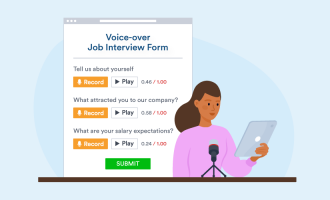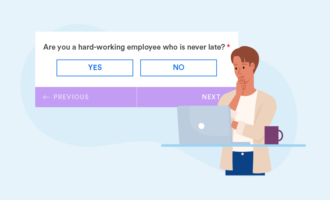Sampling is a critical aspect of many kinds of research, especially when you’re working with large populations of people. It’s often too expensive to survey every member of a target group. Sampling allows you to select a subset of participants to represent the overall population.
Cluster sampling is a specific sampling technique that involves creating population subsets, which can help reduce the cost and shorten the timeline of a study even further. If you’re considering using cluster sampling for your research project, here’s everything you need to know to get started.
An explanation of cluster sampling
Cluster sampling is a random sampling method that allows researchers to study a population by dividing it into groups called clusters. These clusters are usually based on groups that already exist — such as people who live in certain states, cities, metropolitan areas, counties, etc.
According to Arvind Sharma, assistant professor of applied economics at Boston College, this strategy prevents overlapping — a problem that increases the chances of duplicating data and creating sampling errors.
Creating non-overlapping clusters is crucial in cluster sampling. “For example,” Sharma explains, “if you’re collecting data for taxpayers, clustering based on cities ensures that one person cannot appear in two cities.”
Let’s consider two hypothetical examples of research studies for cluster sampling:
- Research to determine the relationship between a college degree and employee success in the tech industry in the United States
- A study estimating the number of college students using a food delivery app in the United States
In the first example, we can divide the entire population into states. Those states are clusters. In the second example, individual colleges can serve as clusters.
Another feature of cluster sampling is that clusters can be externally homogeneous, or the same, and internally heterogeneous, or having different characteristics.
In the second example above, all the clusters are colleges, which means they all share common characteristics of post-secondary institutions. So externally, they’re homogeneous. But each college may have different departments, enrollment systems, academic programs, and more. That is, they’re internally different.
Steps to conduct cluster sampling
To conduct cluster sampling, follow these four steps:
1. Define the population
The first step is to clearly determine the group you want to study. In the first and second examples above, the defined populations are tech industry employees in the U.S. and college students in the U.S., respectively.
2. Divide the population into clusters
Break the population down into clusters that are representative of the larger population.
Note that it’s best to create clusters based on facts (like demographics) rather than on attitudes and behaviors. The reason for this, according to Matthew Ovington, cofounder of Research Connections, is that people are likely to be truthful about their demographic characteristics, such as age, gender, and location. Opinions and beliefs change frequently, which makes them unreliable characteristics; additionally, people may not always be honest about their beliefs.
3. Randomly select clusters
Since the clusters are representative of the larger population, you can randomly select a few of them for your research purposes. Use simple random sampling or systematic random sampling to ensure that each cluster has an equal chance of selection.
You could manually assign numbers to clusters, then select clusters using a lottery method. You could also use a random number-generating app to pick numbers randomly.
4. Collect data from the sample
Once you’ve selected your clusters, the next step is to collect data from your sample. You should include every member of the selected clusters in the survey. Their responses form the data for analysis.
Types of cluster sampling
There are also sub-types of cluster sampling that you can use. Here’s an overview of these.
One-stage cluster sampling
In this type of cluster sampling, you’d divide the population into clusters once.
In the first example, it may be impossible to reach all Americans working in the tech industry. So, you’d first divide this population into states as clusters. Assign the states numbers. Then you could use a number-generating app to choose numbers.
If you want a sample size of 10, you’d choose 10 states. Then you’d survey all the members of that cluster.
Double-stage cluster sampling
With this method, you’d further divide the clusters into more groups.
In the second example, grouping college students into departments is an example of one-stage cluster sampling. But if costs or academic schedules make it difficult to survey all the members of each department, you could divide the departments further into the type of program (full-time or part-time, for instance) or the type of degree students are pursuing.
As in the single stage, you’d assign clusters numbers and choose them randomly. Then you’d survey all the members of the selected clusters.
Multistage cluster sampling
In multistage cluster sampling, you would further group a double-stage cluster into even smaller clusters.
In our American tech industry example, single-stage clustering will give you a group of states. Double-stage clustering further breaks down states into counties. Multistage clustering could focus on cities.
In each stage, you’d select clusters randomly and survey the individual units.
The pros and cons of cluster sampling
While cluster sampling works well for certain use cases, it isn’t always the best choice. Below are some pros and cons of cluster sampling to keep in mind.
Pros
- The cost of surveying a population decreases as you reduce the number of participants. Clustering reduces the number of participants for the survey.
- Cluster sampling minimizes the amount of time and logistics associated with surveying. It’s easier and simpler to administer and monitor surveys on small subsets than on large populations.
- When done well, cluster sampling represents the entire population and delivers good results.
Cons
- You group respondents based on the information they provide, so if they provide inaccurate information, you could assign them to the wrong cluster. This is why it’s important to cluster based on facts and other attributes that are unlikely to change.
- Cluster sampling can lead to higher sampling error. If the individuals within clusters are similar to each other, the results may not be representative of the overall population.
- Cluster sampling is less efficient than random sampling, so it’s only appropriate where random sampling is too challenging.
Cluster sampling vs stratified sampling
You may have also heard of stratified sampling, which is another sampling technique. Both cluster sampling and stratified sampling divide populations into smaller groups and are useful for studying large populations.
In cluster sampling, you’d use random sampling to select the clusters. Once you’ve selected clusters, you’d automatically include all members of the cluster in the survey. With stratified sampling, however, you’d randomly select members from each group in the strata so all members of each group wouldn’t be in the survey.
More efficient surveys with Jotform
Whether you’re working with large or small clusters, Jotform helps simplify the entire survey process. You can create engaging and shareable questionnaires using Jotform’s free survey maker, which includes more than 10,000 survey templates that you can customize to suit your research needs. And once you’ve created your survey, you can analyze the results and even share them with participants online. Get started with Jotform today.
Photo by Christina Morillo


































Send Comment: